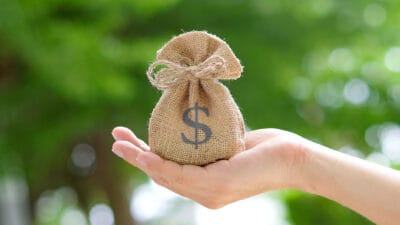As a longstanding blue-chip ASX share, Woolworths Group Ltd (ASX: WOW) arguably has a reputation as a solid dividend payer. And fair enough too, if we examine this company's history of dividend payments. Woolworths shares have given out two dividend payments every year since at least the early 1990s. You can't fault that record for consistency.
Now saying that, it's not as if Woolworths' dividends have been 'up and to the right' every year. The company paid out $1.08 in dividends per share over 2021, which wasn't even close to the all-time high of $1.39 per share that we saw doled out back in 2015.
Grocery dividend showdown
So as it stands today, that $1.08 in dividends that was paid out last year gives the Woolworth share price a trailing yield of 3.13%. That's going off of the present Woolworths share price of $34.48 (at the time of writing). Woolies also typically attaches full franking credits to its dividends, so that yield grosses-up to 4.47% with the inclusion of said franking credits.
Now, comparing Woolies shares to that of its arch-rival Coles Group Ltd (ASX: COL) and something stands out like the proverbial. At the current Coles share price, the company offers a trailing yield of 3.77%. That's obviously a lot larger than what Woolworths shares are currently offering. Coles usually gives its dividends the full franking treatment too, so this yield grosses-up to a meaty 5.39% at these prices. That's based on Coles' two dividends of 2021. Those were a March interim payment of 33 cents per share. And a September final dividend of 28 cens per share.
So why does Coles have a larger dividend yield than Woolworths right now? Isn't Woolworths the larger company with a higher market share of the grocery market? Well, yes and yes. But that means a whole lot of not much when it comes to a share's dividend yield. There are only a few things that can affect a company's dividend yield. Those would be the actual raw dividend number per share. And the price-to-earnings (P/E) ratio the shares trade at.
Woolworths shares vs. Coles shares
As it currently stands, Woolworths is trading on a P/E ratio of 28.5, which means that investors are paying $28.50 for every $1 of earnings that Woolies brings in. Coles on the other hand, currently commands a P/E ratio of just 21.4. That means investors are currently placing a premium on Woolies shares compared to Coles, perhaps for the reasons listed above. But if a company is more expensive on a P/E ratio basis, then its dividend yield will be lower. For example, if Woolies shares halved in value tomorrow, its dividend yield would double for any new investors.
So because the market is placing a higher premium on the Woolworths share price against the Coles share price, its dividend yield is lower. The picture would be completely different if both companies traded on the same P/E multiple. But they don't (at least, not today), and thus we see this dividend disparity.
So if you were wondering why the Woolworths dividend isn't as high as the Coles dividend, now you have your answer.









